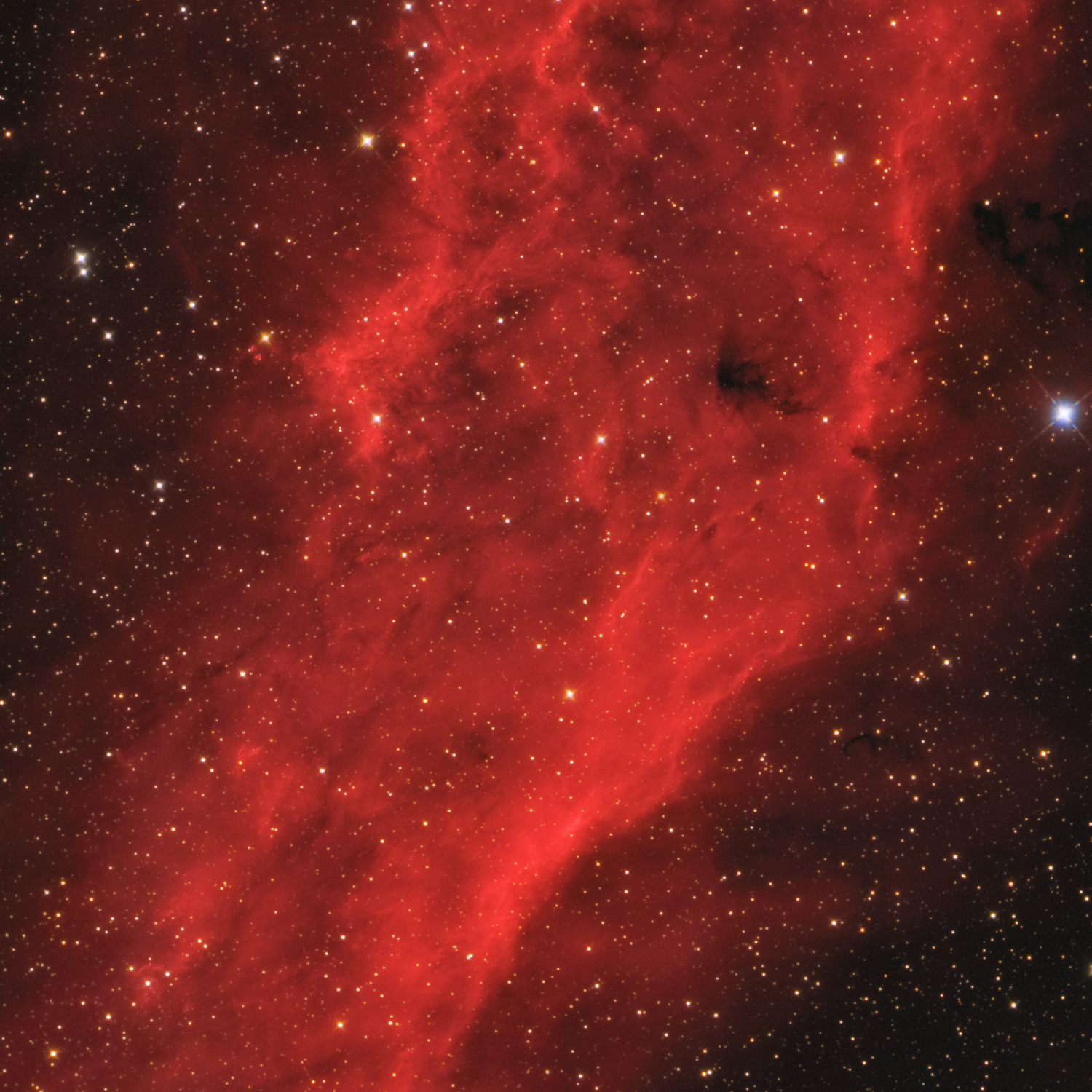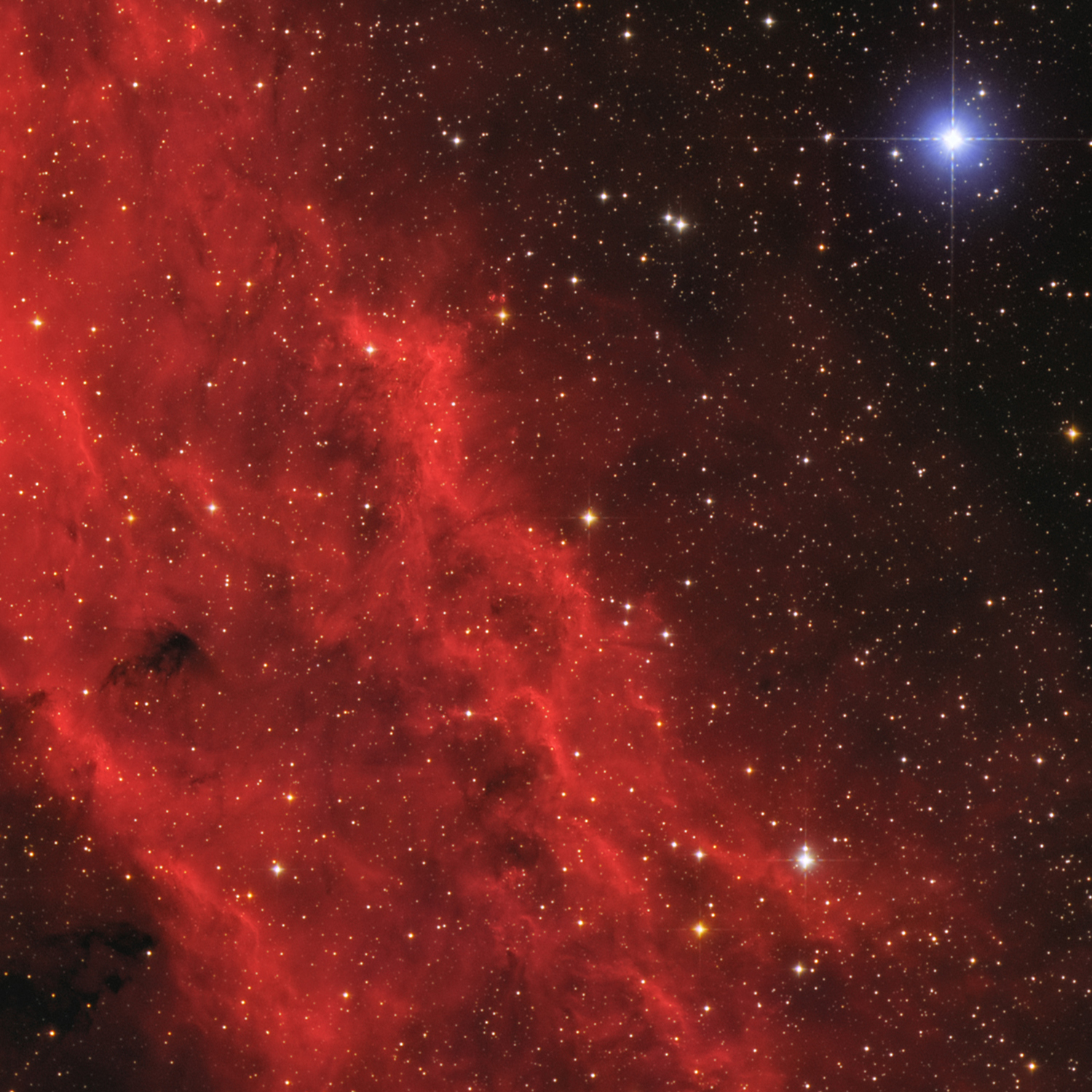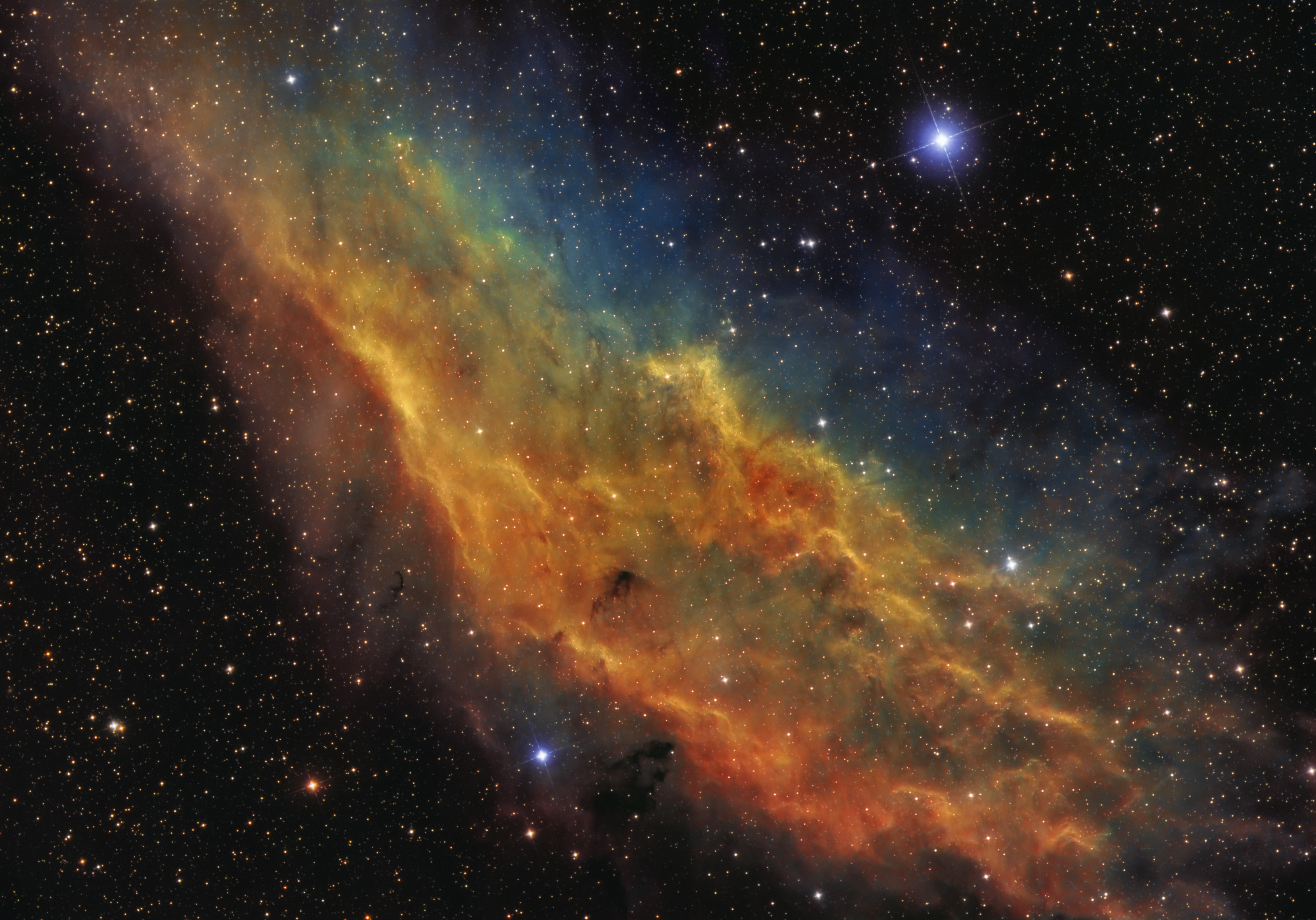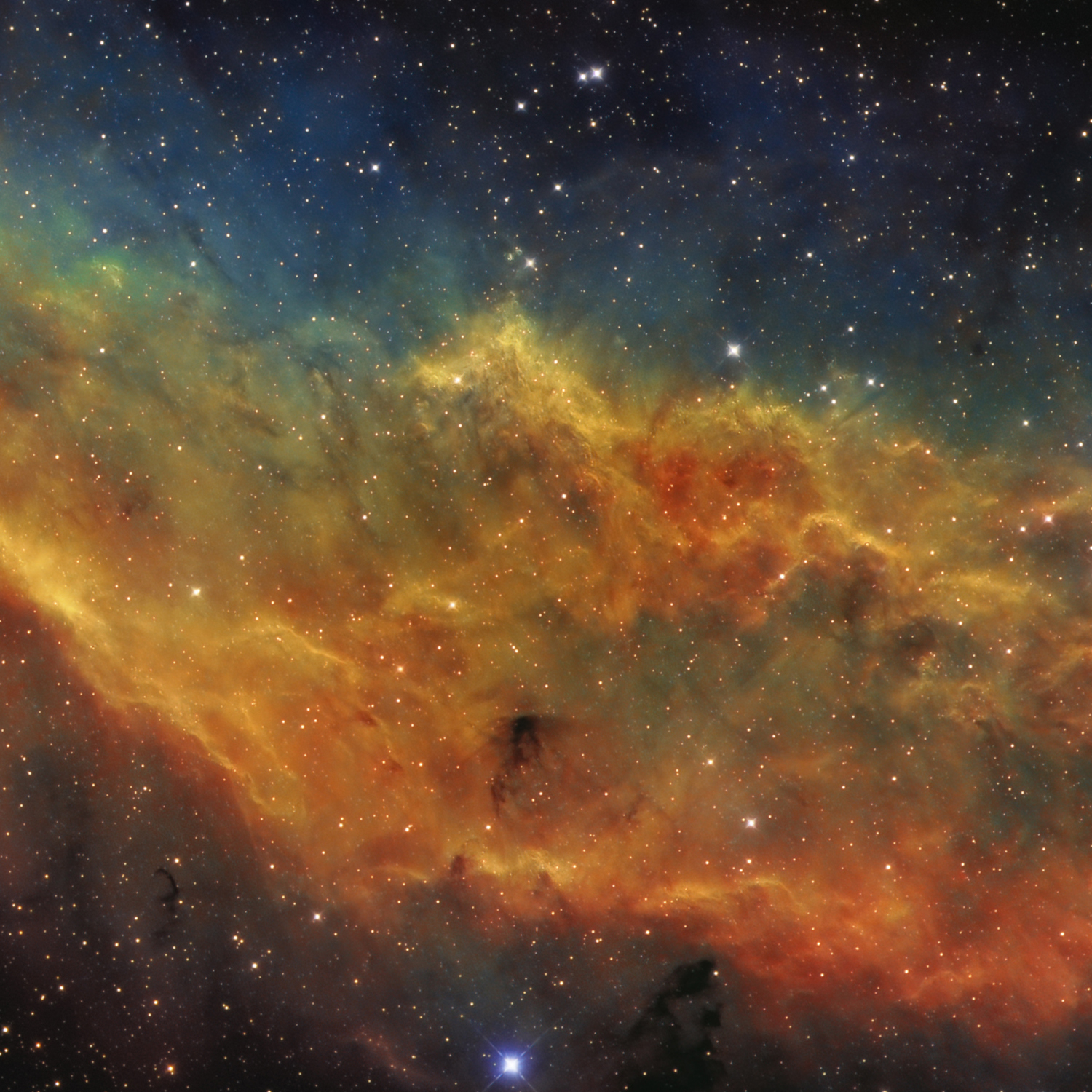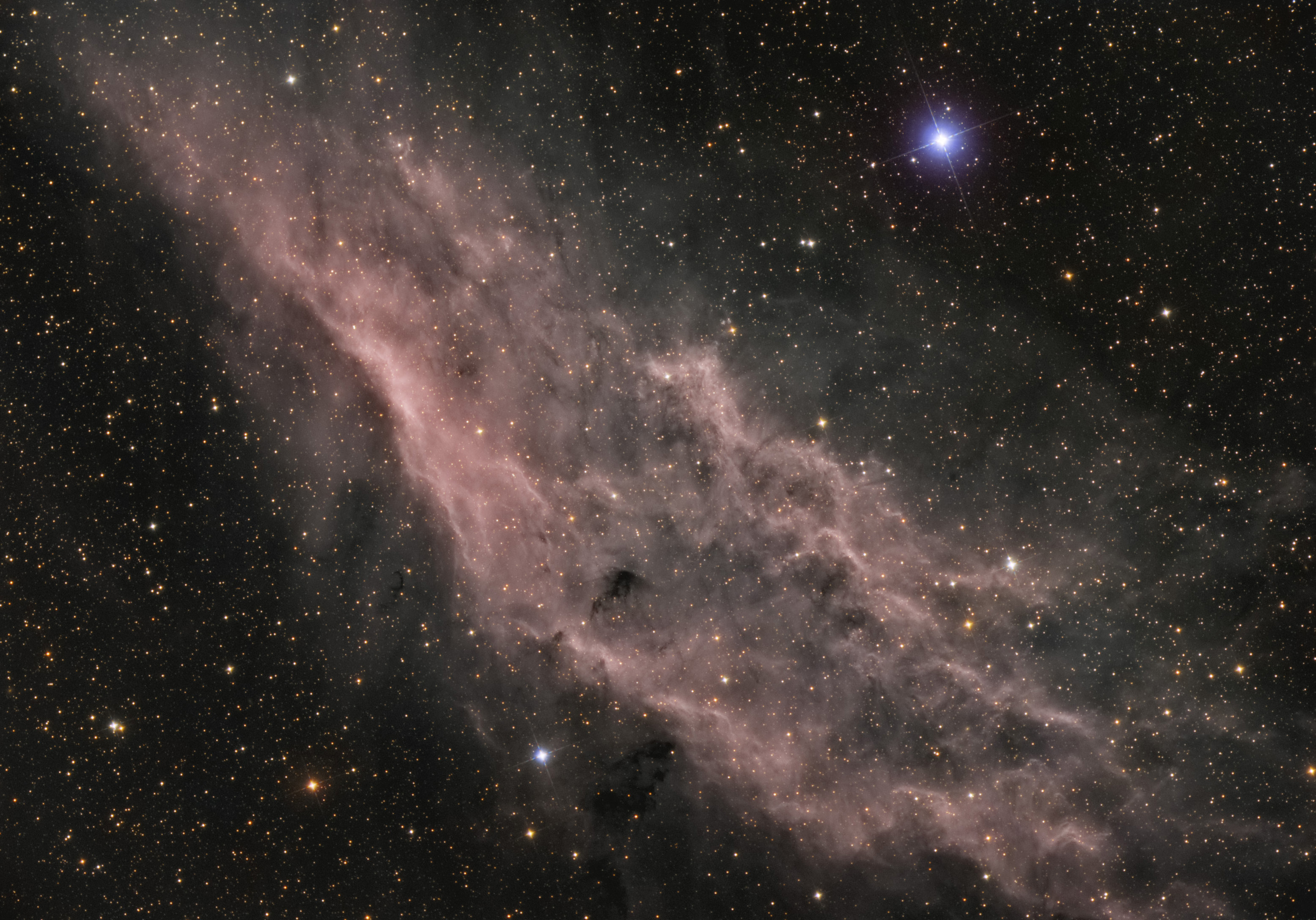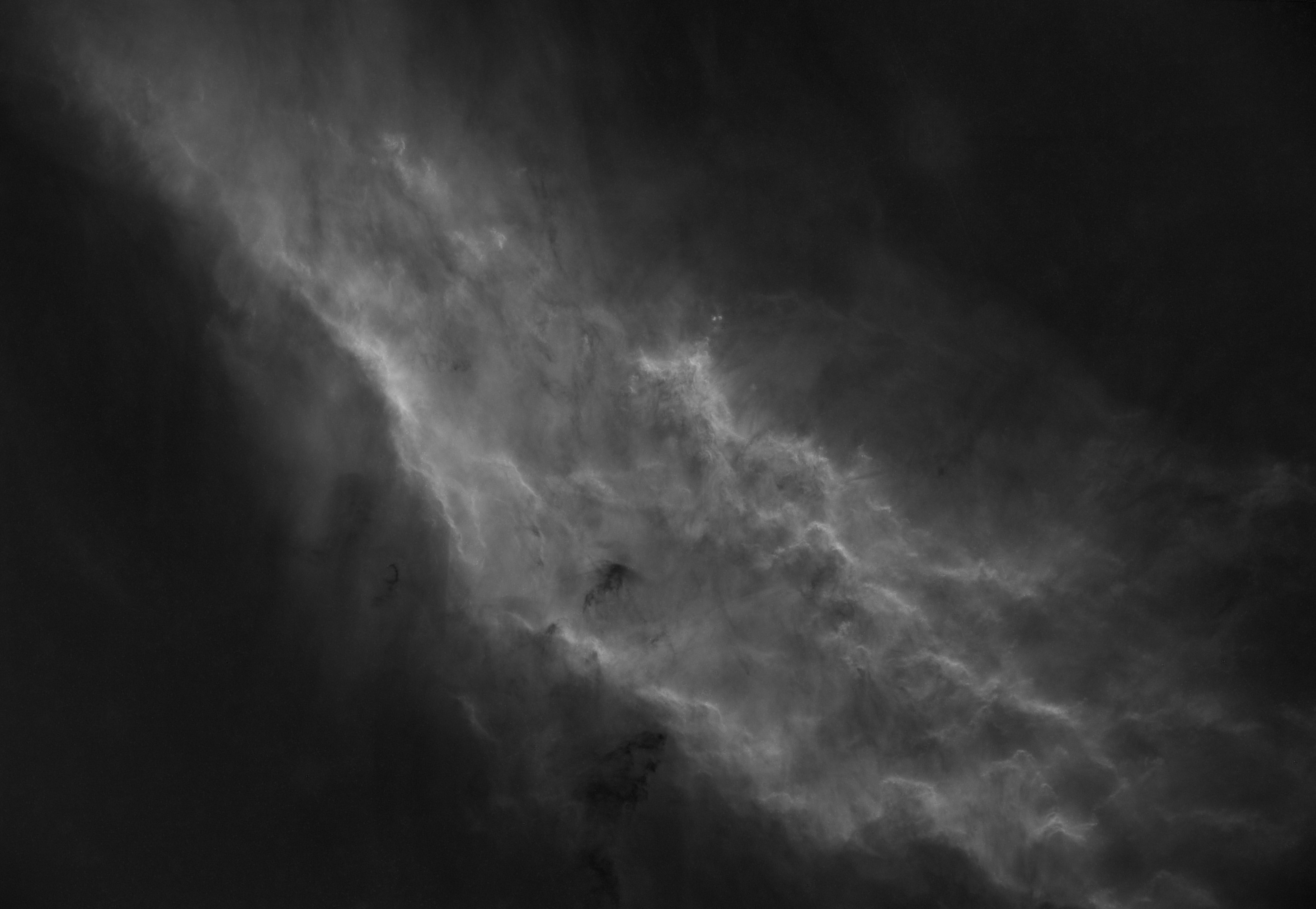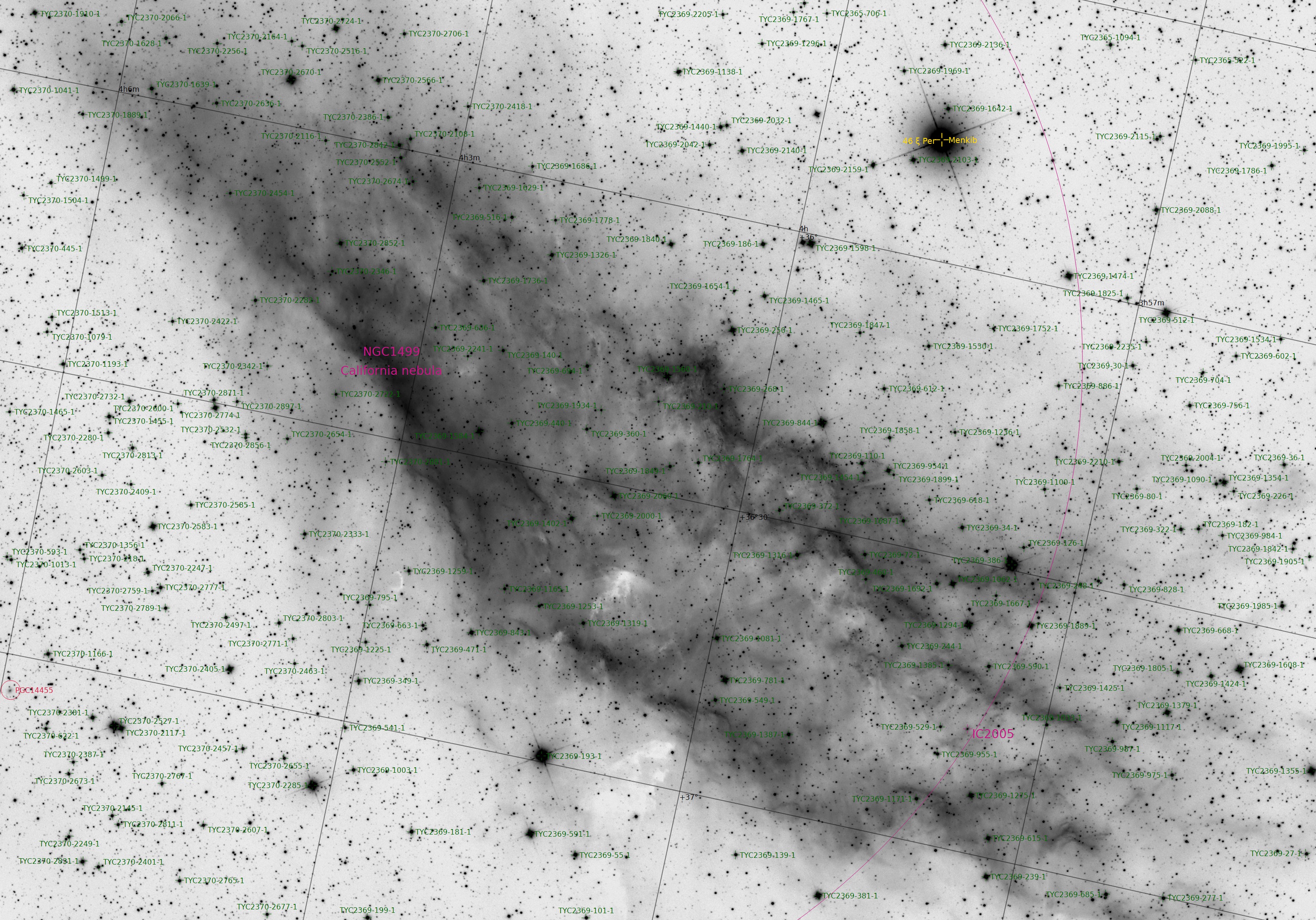
NGC 1499 - California Nebula
The California Nebula is a bright emission nebula in the constellation Perseus, ionized by the luminous star Menkib (ζ Per). Its intense UV radiation excites the hydrogen atoms of a dense gas cloud which then emits light in specific wavelength. The brightest of these so-called emission lines is the Hα radiation at 653nm on the red edge of our visible spectrum.
This object, discovered by Edward Barnard in 1884 and is one of the closest nebulae of our night sky and spans a larger area than the full moon, making it a very popular object for amateur astronomers. It is also often photographed in the Hubble Palette, giving it a look of diverse rainbow-like color. If you want to capture it in its natural colors, it always looks very red because of very little emission in other lines.
Photographed from Heidelberg, Germany under Bortle 7 sky conditions
-
Category
Emission Nebula
-
Coordinates
RA 04h 03m 18.3s
DEC +36° 25' 18" -
Distance
~ 1304 ly
-
Apparent Mag
5 mag
-
Equipment
150mm f/2.8 Hypergraph
Skywatcher AZ-EQ 6
QHY-9S mono CCD -
Exposure
Hα: 76 x 600 s
OIII: 138 x 300 s
SII: 48 x 300 s
R: 15 x 420 s
G: 15 x 420 s
B: 15 x 420 s
Total Integration: 33.4 h -
Publication Date
25.11.2020

